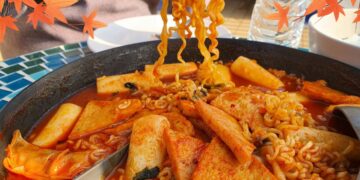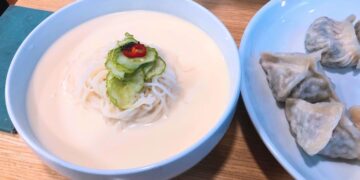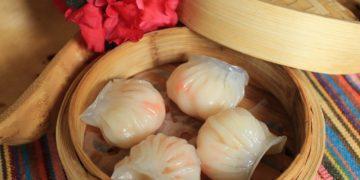You came for the bibimbap, stayed for the street tteokbokki, and bookmarked that temple cuisine spot near Gyeongju. But have you ever wondered what Koreans actually eat when the cameras are off and the family’s gathered at the table? Everyday Hansik, the kind served in lunchboxes, weekday dinners, and early morning breakfasts, isn’t dressed up for tourists. It’s practical, comforting, and deeply personal. And if you want to understand how important this Korean food is, this is where your journey to Hansik really begins.
What Does Hansik Mean in Korean?
Ask ten Koreans what Hansik (한식) means, and you’ll likely get ten different answers, and they are all true. Technically, Hansik refers to traditional Korean cuisine made using Korean ingredients. It’s rooted in seasonal, fermented, and mostly plant-based dishes. But emotionally? Hansik is what feeds the soul—just as much as the body.
Because for Korean locals, Hansik is important not because of one singular cuisine. The whole Hansik itself means a philosophy: balance over excess, seasonality over flashiness, and respect for ingredients shaped by centuries of agrarian living.
And unlike fusion creations or fancy reinterpretations, home-cooked Hansik keeps its roots in family tradition, not restaurant trends.
What Korean Locals Eat at Home: A Closer Look at Hansik Food
The real Korean dining table isn’t a parade of grilled meats and shiny bibimbap bowls. Instead, it’s a quiet, humble composition of rice, soup, fermented banchan (side dishes), and protein depending on the day’s budget or the season.
Core Structure of Everyday Hansik
- Bap (밥): Steamed white rice, or multigrain rice (japgokbap) for the health conscious individuals.
- Guk (국) or Jjigae (찌개): A soup or stew. Think miyeokguk (seaweed soup) or doenjang jjigae (soybean paste stew)—nutritious, warming, and economical.
- Banchan (반찬): Known as Korean side dishes, these are the real heartbeat of Hansik. Kimchi is a constant, but the rest rotate: stir-fried zucchini, seasoned spinach (sigeumchi-namul), pan-fried tofu, or leftover fish.
- Protein (occasionally): Often eggs, pan-fried fish (like mackerel), or thin bulgogi slices—less frequent than Western norms.
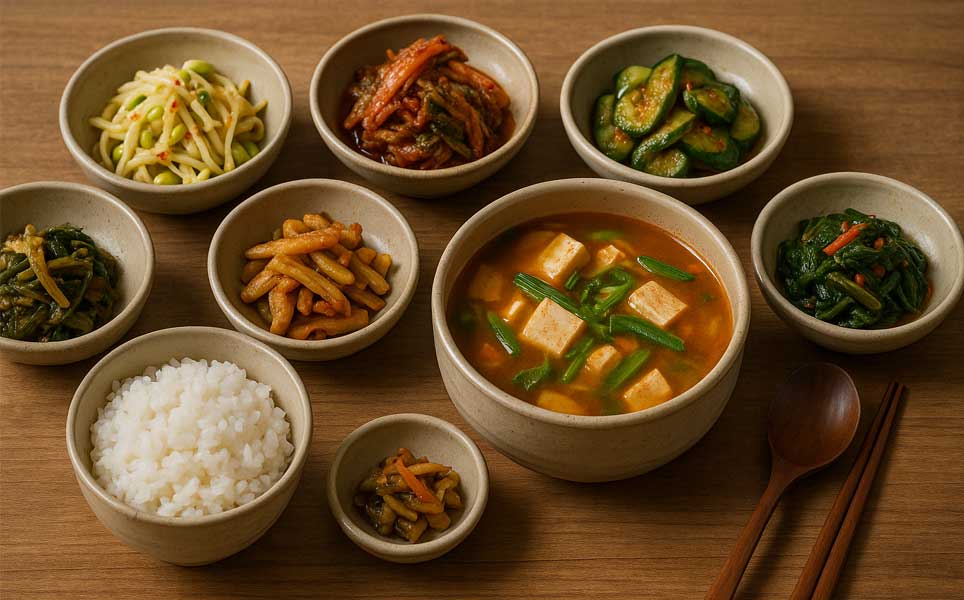
The meals are rarely extravagant. But they’re designed to be nutritionally complete, visually harmonious (based on the five colors or obangsaek), and deeply tied to nature.
Why Is Hansik Important to Korean Identity?
Unlike other countries, Hansik is important for Korean locals not just because it’s their food culture. Because actually, Hansik has long represented the living expression of Korea’s philosophy, spirituality, and social fabric.
- Fermentation as Survival: Did you know? Kimchi, gochujang, doenjang—these are survival tools. Before refrigeration, Korea relied on fermentation to preserve food through bitter winters.
- Health Philosophy: Traditional Korean medicine believes food and medicine are inseparable. Meals are crafted for balance—cooling foods in summer (like mul-naengmyeon), restorative ones in winter (like samgyetang).
- Shared Tables, Shared Lives: Hansik emphasizes communal eating. Banchan is always shared, signaling trust, equality, and connection. Even solo diners often eat as if someone might join.
- UNESCO-Recognized Heritage: Kimjang (the kimchi-making tradition) was designated an Intangible Cultural Heritage by UNESCO in 2013. Because beyond its Korean food making culture, Kimjang is a ritual that binds generations.
Where to Taste Real Hansik Beyond the Tourist Spots
To get a glimpse of real Korean food culture, skip the Instagram cafes and try these local options:
1. Dosirak (도시락) Lunchbox Stores
Convenience stores sell them, but the real ones come from mom-and-pop shops or school zones. They include rice, egg rolls (gyeran-mari), stir-fried anchovies (myeolchi-bokkeum), and occasional meat—just like a Korean parent would pack.
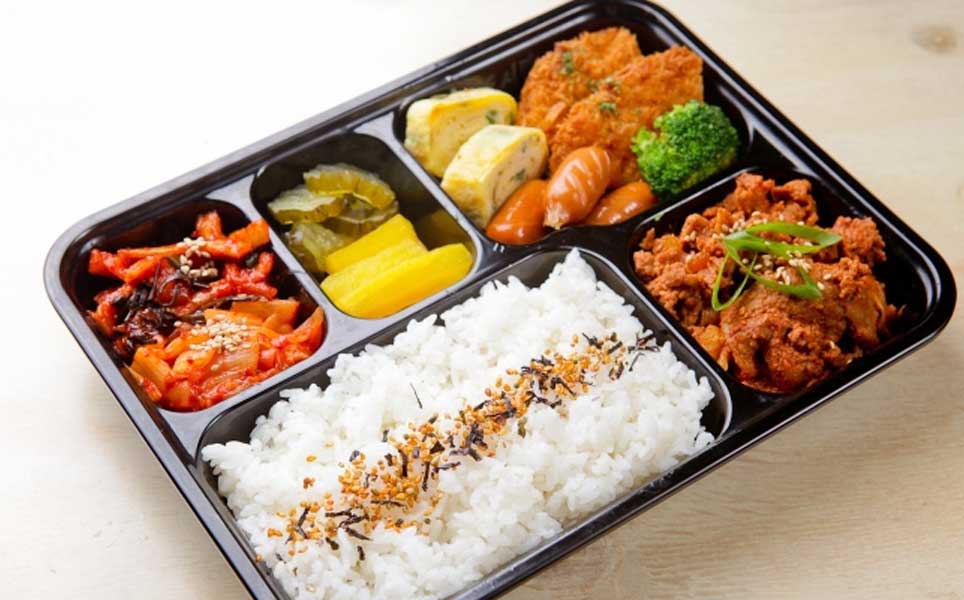
2. Home-Style Restaurants (Baekban Jip, 백반집)
Usually hidden in alleyways, these spots offer rotating daily menus. Ask for a “baekban jeongsik” (set meal with rice, soup, and banchan). It’s the closest thing to eating at a Korean auntie’s house.
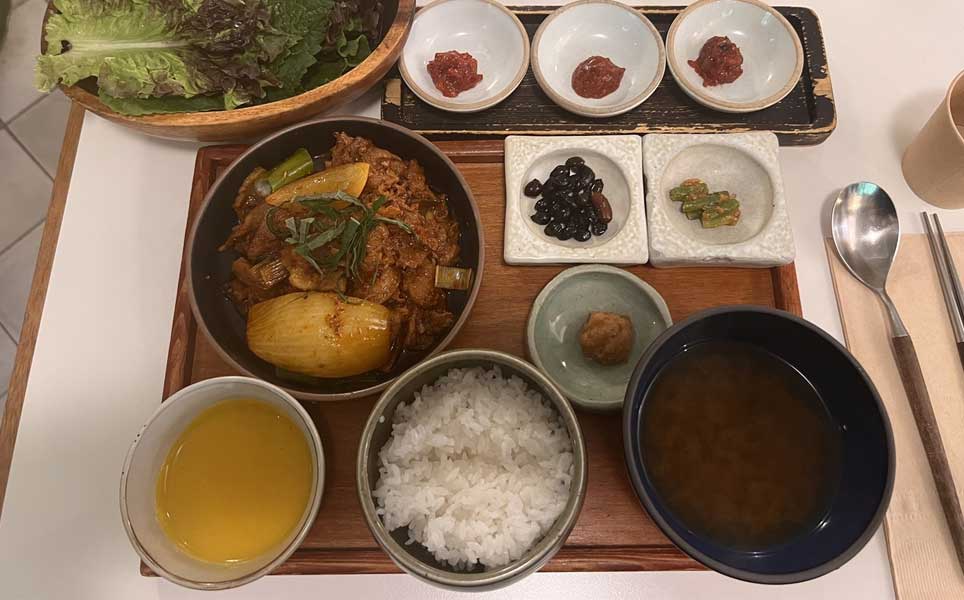
3. Temple Food Centers
Try the Korean Temple Food Center in Seoul, or Baekyangsa Temple for a temple stay. These vegan dishes—no garlic, no onions—offer a glimpse into a spiritual interpretation of Hansik.
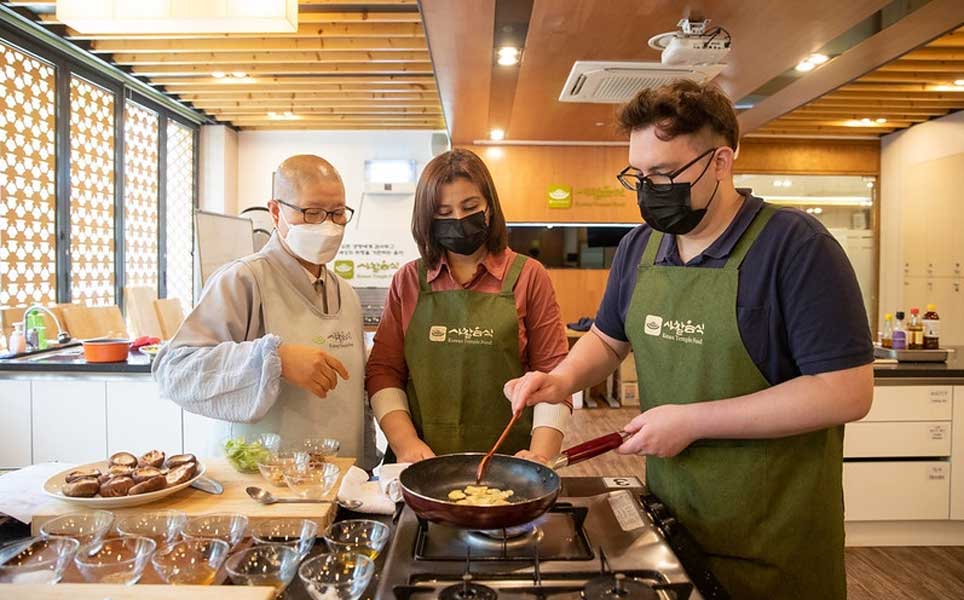
4. Cooking Classes
Sign up for “I Love Hansik” in Busan or the Hansik Korean Cooking Class in Seoul. These offer hands-on training with market visits and multi-lingual support. Expect to make dishes like kimbap, japchae, or doenjang jjigae with stories to go with them.
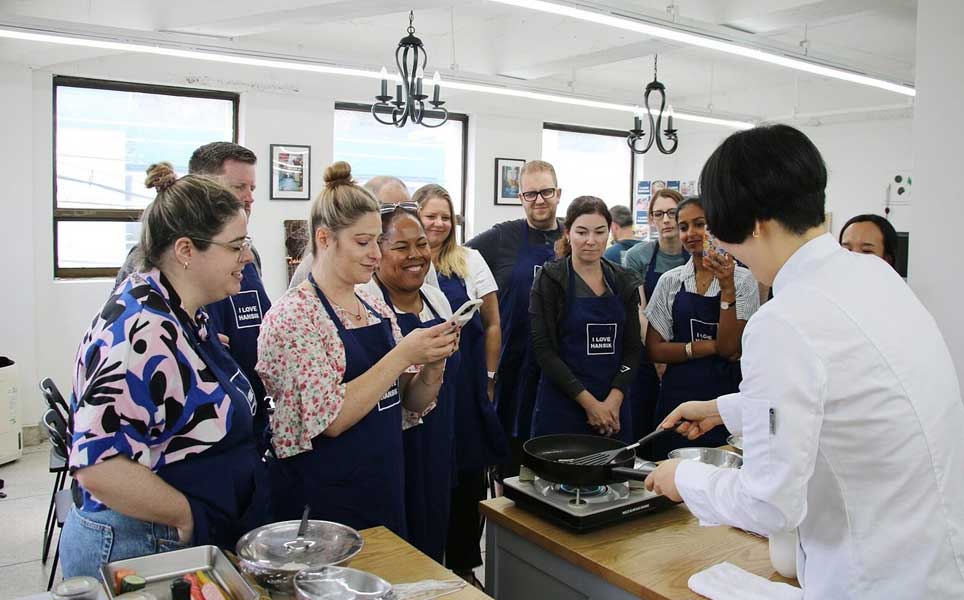
Beyond Bulgogi: Everyday Hansik Dishes to Know
Even if you’ve tasted the global stars like bulgogi or bibimbap, here’s a list of lesser-known—but very real—home dishes worth discovering:
- Kongnamul Guk (Soybean Sprout Soup): A common breakfast or hangover soup. Light, healing, and ultra-affordable.
- Jangjorim (Soy Sauce Beef Strips): Staple banchan that lasts days in the fridge.
- Siraegi Guk (Dried Radish Greens Soup): Rural, nutrient-packed, and almost poetic in its simplicity.
- Gamja Jorim (Braised Potatoes): Sweet-salty soy-glazed potatoes found in countless lunchboxes.
- Kimchi Bokkeumbap (Kimchi Fried Rice): The fastest way to clean out a fridge and still have dinner.
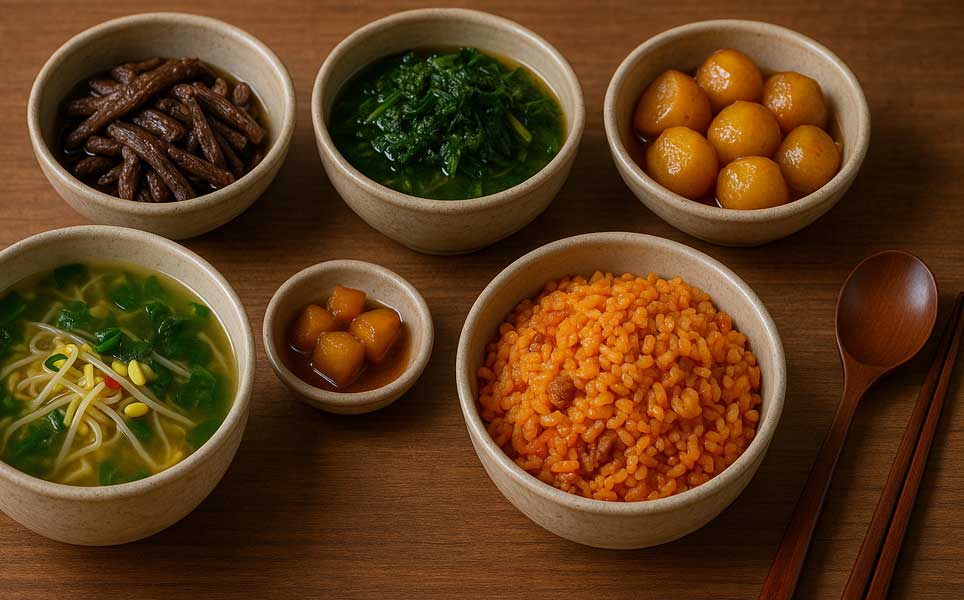
How to Respect the Culture While Eating Hansik
When you’re invited to share a Korean meal—or even when you’re dining solo in a quiet neighborhood eatery—understanding the unspoken rules of Korean Hansik food can deepen your connection to the experience. Hansik isn’t just about what’s on the table. It’s about how you share it, how you approach it, and how you show respect for the traditions behind it.
Don’t waste the banchan
Those small side dishes aren’t appetizers or decorative extras. In Hansik, they play a central role in the meal’s balance. They’re meant to be eaten with rice, complementing each bite with texture and nutrition. Take only what you need and savor each flavor. It reflects the spirit of Hansik—humble, mindful, and sustainable.
Use both hands
One of the simplest yet most meaningful gestures in Korean dining culture. When receiving a bowl of rice or pouring a drink, using both hands—especially with elders—shows humility and appreciation. This small act echoes the deeper values behind what Hansik means in Korean: care, community, and shared respect.
Know your spice tolerance
Not all Korean Hansik is spicy, though it’s a common stereotype. If you’re sensitive, start with baek kimchi (non-spicy white kimchi) or mild stews like kongnamul guk (soybean sprout soup). Respecting Hansik also means knowing your limits so you can enjoy the full experience without discomfort.
Leave the “fusion mindset” behind (for now)
You might be tempted to mix it up, swap gochujang for sriracha, or eat your bibimbap without stirring. But for your first few meals, try tasting Hansik in its original form. It’s how generations have shared meals before you—and a way to honor why Hansik is important in Korean life. Give the flavors a chance to speak before remixing the story.
Hansik is Still Evolving, Still Rooted
While Hansik is now featured in Michelin-starred restaurants and global food expos, its soul remains in Korean homes. In Busan, Hansik cooking classes are selling out during election season—not despite the tension, but because locals are finding comfort in food. In Seoul, young professionals still begin their day with seaweed soup, the same way their grandmothers did.
And overseas? The rise of Hansik-inspired restaurants—like Hansik Dining Collective in Singapore or Hansik Goo in Hong Kong—proves one thing: this cuisine is adaptable, but never diluted.
Want to Understand Korea? Start at the Kitchen Table.
You can follow K-pop tours, visit centuries-old palaces, and stroll through hanok villages—but if you really want to understand what it means to live in Korea, eat the way Koreans eat. Not at a polished tourist buffet. But with metal chopsticks, mismatched bowls, and kimchi juice on the table.
Because Hansik isn’t just Korean food—it’s Korean life.
Related Posts
1,737 total views, 5 views today


